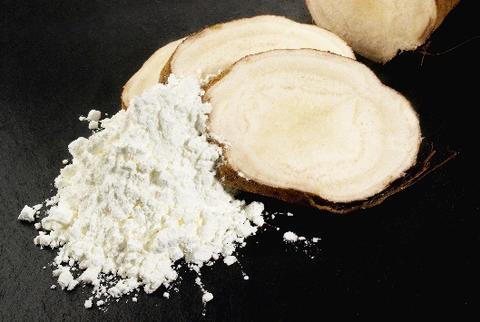Two New Reference Materials Assist Supplement Makers with Measurements of Isoflavones in Kudzu
RM 8650 Ground Kudzu (Pueraria montana var. lobata) Rhizome and SRM 3268 Kudzu (Pueraria montana var. lobata) Extract

Kudzu, a member of the pea family native to East Asia and considered an invasive weed in the American South, has been used for centuries in Chinese medicine and is widely available as a supplement with alleged benefits for reducing inflammation and symptoms of menopause. Kudzu is rich in isoflavones, a sub-class of flavanols, and is the subject of clinical trials.
The Food and Drug Administration has issued current good manufacturing practices that require manufacturers to characterize both the chemical composition of ingredients (that is, of the raw materials such as roots and leaves), and finished products. These kudzu reference materials were developed in collaboration with the National Institutes of Health Office of Dietary Substances. The two NIST kudzu reference materials will enable makers of dietary supplements to check their analytical methods for measuring isoflavones in both their raw ingredients and the finished products, thus assuring that their product labels are accurate. They can also be used by researchers conducting clinical trials so that they can validate the measurements of isoflavone amounts that they are giving to study participants.
The companion kudzu reference materials, one powder made from the rhizome, or root, of kudzu and the other made of a more concentrated extract, are derived from a batch of kudzu that a botanist analyzed to confirm that it is authentic Pueraria montana var. lobata, one of the many varieties and species of kudzu. Partial DNA sequences are also available.
In addition to values for the isoflavones puerarin, daidzin, and daidzein, the NIST kudzu reference materials were analyzed for the elements arsenic, cadmium, and lead, which are of concern when ingested by humans in high enough amounts. SRM 3268 also has assigned values for selenium, which is not available in RM 8650. These reference materials can also be used to validate manufacturer’s analytical methods for measuring these elements in their products.
A unit of RM 8650 consists of five packets, each containing approximately 3 grams of kudzu rhizome powder that can be stored at room temperature.
A unit of SRM 3268 consists of five packets, each containing approximately 1 grams of kudzu extract powder that can be stored at room temperature.

